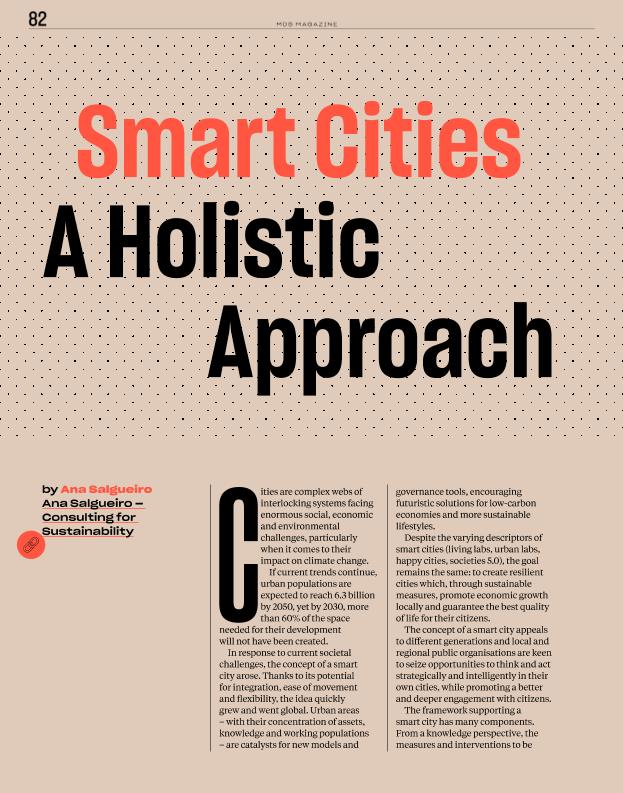| LDR | | | 00000cab a2200000 4500 |
| 001 | | | MAP20200018506 |
| 003 | | | MAP |
| 005 | | | 20200602120345.0 |
| 008 | | | 200601e20200501prt|||p |0|||b|eng d |
| 040 | | | $aMAP$bspa$dMAP |
| 084 | | | $a93 |
| 100 | | | $0MAPA20200013013$aSalgueiro, Ana |
| 245 | 1 | 0 | $aSmart cities$b: a holistic approach$cAna Salgueiro |
| 520 | | | $aCities are complex webs of interlocking systems facing enormous social, economic and environmental challenges, particularly when it comes to their impact on climate change. If current trends continue, urban populations are expected to reach 6.3 billion by 2050, yet by 2030, more than 60% of the space needed for their development will not have been created. In response to current societal challenges, the concept of a smart city arose. Thanks to its potential for integration, ease of movement and flexibility, the idea quickly grew and went global. Urban areas with their concentration of assets, knowledge and working populations are catalysts for new models and governance tools, encouraging futuristic solutions for low-carbon economies and more sustainable lifestyles. |
| 650 | | 4 | $0MAPA20160001631$aCiudades inteligentes |
| 650 | | 4 | $0MAPA20080595180$aCiudades sostenibles |
| 650 | | 4 | $0MAPA20080574932$aCambio climático |
| 650 | | 4 | $0MAPA20080580865$aImpacto ambiental |
| 650 | | 4 | $0MAPA20080570736$aSostenibilidad |
| 773 | 0 | | $wMAP20110004842$tFullCover : seguros & risco$dLisboa : MDS Consultores de Seguros e Risco$g01/05/2020 Número 13 - mayo 2020 , p. 82-83 |
| 856 | | | $qapplication/pdf$w1106513$yRecurso electrónico / Electronic resource |


